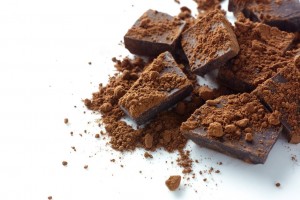WSJ Historically Speaking: Before Chocolate Bunnies: An Easter Season History of Cocoa

In the week leading up to Easter, estimates say Americans will have bought more than 70 million pounds of chocolate. PHOTO: ISTOCK
A combination of drought, violence, disease and pollution has caused the price of cocoa beans to rise by an eye-watering 40% since 2012—without having the slightest effect on global demand.
In the week leading up to Easter, estimates say Americans—who are no slouches when it comes to candy consumption—will have bought more than 70 million pounds of chocolate. The cocoa bean—like the coffee bean, the wine grape and the tea leaf—has become one of life’s indispensable indulgences—unnecessary for health but necessary (many would argue) for happiness.
Yet our passion for chocolate almost didn’t happen. The Aztecs brought cocoa beans as gifts to Christopher Columbus in 1502 during his fourth and final voyage to the New World. He was given chocolate in drink form under the name xocolatl, which in Nahuatl, the Aztec language, means “bitter water.” Despite its popularity and ancient pedigree in South America (the earliest traces of cocoa use date from 1400 B.C.), Columbus couldn’t see the sharp and spicy drink catching on in Spain.
His mistake was Hernán Cortés’s gain. In 1519 the Aztec ruler Montezuma II made an offering of cocoa beans to the conquistador in the belief that he was the Aztec deity Quetzalcóatl in human form. Cortés wasn’t wild about the taste either, but he soon realized the great potential in cocoa—for military purposes. “One beaker keeps a soldier fresh for the whole day,” he noted.
He also discovered that mixing cocoa with sugar suppressed the bitterness and made it irresistible to European palettes. The Swedish botanist Carl Linnaeus was reflecting public opinion when he gave the cocoa tree the scientific name of Theobroma, ancient Greek for “food of the gods.”
Following Cortés’s lead, military authorities worked strenuously to keep their armies supplied with chocolate. In 1755, at the beginning of the French and Indian War, Benjamin Franklin, then a colonial postmaster general, obtained 6 pounds of chocolate for each of the officers serving under Gen. Edward Braddock (who was killed later that year in the Ohio River Valley). During the Revolutionary War, the Continental Congress thought chocolate so important for morale that it enacted price controls to ensure that the soldiers received their rations.
By the end of the 18th century, improvements in production made cocoa the drink not just of kings and armies but of presidents and lovers, too. In retirement at Mount Vernon, George Washington may have turned his back on power, but he still enjoyed his favorite breakfast of cornmeal hoe cakes washed down with a dish of warm chocolate cream.
As for the notorious seducer Giacomo Casanova (1725-1798), despite having an arsenal of tricks up his sleeve, he could always rely on one to deliver the goods. It seems that no woman, including those sequestered behind convent doors, could resist the double temptation of the world’s greatest lover and a cup of hot cocoa.
But there is more. In addition to chocolate’s supposed ability to improve sex lives and fighting capabilities, it may do wonders for the intelligence. A 2012 study in the New England Journal of Medicine reported a correlation between a country’s chocolate intake and its production of Nobel prizewinners. Linnaeus was right: A bar of chocolate may be the next best thing to a religious experience.
